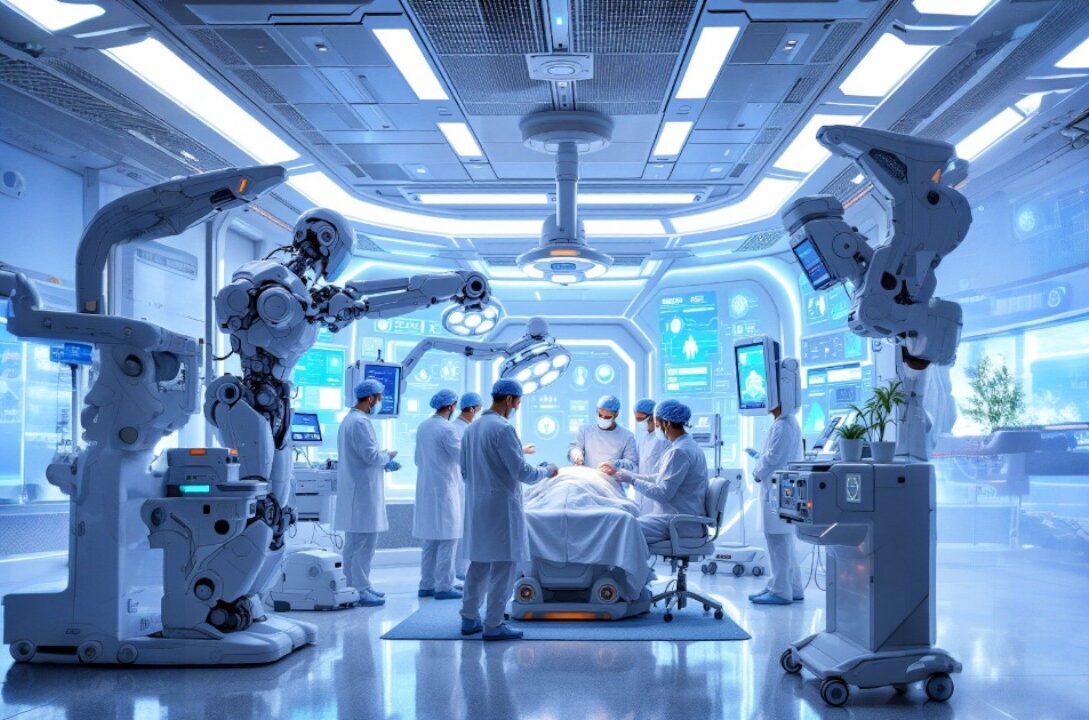Healthcare is on the brink of a revolution. From cutting-edge technologies to groundbreaking treatments, innovations in medicine are poised to transform how we diagnose, treat, and prevent diseases. These advancements aren’t just incremental improvements—they’re game-changers that will redefine healthcare as we know it.
In this article, we’ll uncover the untold story of the most exciting healthcare innovations shaping the future. Whether you’re a patient, a healthcare professional, or simply curious about the future of medicine, this guide will leave you inspired and informed.
Why Healthcare Innovation Matters
The Challenges We Face
The global healthcare system is under immense pressure. Aging populations, rising chronic diseases, and escalating costs are straining resources. Without innovation, we risk falling short of meeting the needs of billions worldwide.
The Promise of Innovation
Healthcare innovations offer hope. They promise to:
- Improve patient outcomes: Faster diagnoses, more effective treatments, and personalized care.
- Reduce costs: Streamlined processes and preventive measures that lower healthcare expenses.
- Increase accessibility: Technologies that bring healthcare to underserved communities.
Top Healthcare Innovations Changing the Game
1. Artificial Intelligence in Diagnostics
What It Is:
AI-powered tools analyze medical data, such as imaging scans and lab results, to detect diseases with unprecedented accuracy.
Why It Matters:
- Early detection: AI can identify conditions like cancer or heart disease at earlier stages, improving survival rates.
- Efficiency: Reduces the time and cost of diagnostics, allowing doctors to focus on treatment.
Real-World Example:
Google’s DeepMind has developed AI systems that can diagnose eye diseases as accurately as leading specialists.
2. Telemedicine and Remote Care
What It Is:
Telemedicine uses digital platforms to provide healthcare services remotely, from virtual consultations to remote monitoring.
Why It Matters:
- Accessibility: Patients in rural or underserved areas can access quality care.
- Convenience: Reduces the need for travel and wait times, making healthcare more patient-friendly.
Real-World Example:
During the COVID-19 pandemic, telemedicine saw a massive surge, proving its value in delivering care during crises.
3. Precision Medicine and Genomics
What It Is:
Precision medicine tailors treatments based on an individual’s genetic makeup, lifestyle, and environment.
Why It Matters:
- Personalized care: Treatments are more effective and have fewer side effects.
- Prevention: Identifies genetic predispositions to diseases, enabling early intervention.
Real-World Example:
The Human Genome Project has paved the way for breakthroughs in understanding genetic diseases and developing targeted therapies.
4. CRISPR and Gene Editing
What It Is:
CRISPR technology allows scientists to edit genes with precision, potentially curing genetic disorders.
Why It Matters:
- Cure, not just treat: Offers the possibility of eradicating diseases at their source.
- Versatility: Can be applied to a wide range of conditions, from cancer to rare genetic disorders.
Real-World Example:
Researchers have used CRISPR to treat sickle cell anemia, offering hope for a permanent cure.
5. Wearable Health Technology
What It Is:
Wearable devices, like smartwatches and fitness trackers, monitor vital signs and health metrics in real time.
Why It Matters:
- Continuous monitoring: Provides real-time data to detect anomalies early.
- Empowerment: Encourages individuals to take an active role in their health.
Real-World Example:
Apple Watch’s ECG feature has helped users detect irregular heart rhythms, potentially preventing strokes.
6. 3D Printing in Medicine
What It Is:
3D printing creates customized medical devices, prosthetics, and even organs.
Why It Matters:
- Customization: Produces patient-specific solutions for better outcomes.
- Cost-effectiveness: Reduces the cost of producing complex medical devices.
Real-World Example:
3D-printed prosthetics have transformed the lives of amputees, offering affordable and tailored solutions.
7. Nanomedicine
What It Is:
Nanotechnology uses tiny particles to deliver drugs, diagnose diseases, and repair tissues at the cellular level.
Why It Matters:
- Targeted treatment: Delivers drugs directly to diseased cells, minimizing side effects.
- Early detection: Detects diseases at the molecular level before symptoms appear.
Real-World Example:
Nanoparticles are being used to improve cancer treatments by targeting tumors more effectively.
8. Virtual Reality in Healthcare
What It Is:
VR technology creates immersive environments for medical training, patient therapy, and surgical planning.
Why It Matters:
- Enhanced training: Provides realistic simulations for medical professionals.
- Patient therapy: Helps manage pain, anxiety, and rehabilitation.
Real-World Example:
Surgeons use VR to practice complex procedures, improving precision and reducing risks.
9. Blockchain for Health Data Security
What It Is:
Blockchain technology secures health records, ensuring privacy and enabling seamless data sharing.
Why It Matters:
- Data security: Protects sensitive patient information from breaches.
- Interoperability: Facilitates secure sharing of data between healthcare providers.
Real-World Example:
Estonia’s e-health system uses blockchain to secure patient records and streamline healthcare delivery.
How These Innovations Will Shape the Future
Improved Patient Outcomes
With faster diagnoses, personalized treatments, and preventive care, patients will experience better health and quality of life.
Reduced Healthcare Costs
Innovations like telemedicine and AI diagnostics will lower costs by streamlining processes and reducing inefficiencies.
Greater Accessibility
Technologies like wearable devices and telemedicine will bring healthcare to remote and underserved populations.
FAQs
1. Are these innovations available now?
Many of these technologies are already in use, while others are in advanced stages of development.
2. Will AI replace doctors?
No, AI will augment doctors’ capabilities, helping them make better decisions and focus on patient care.
3. How affordable are these innovations?
While some technologies are expensive, costs are expected to decrease as they become more widespread.
4. What are the ethical concerns with gene editing?
Gene editing raises questions about safety, consent, and potential misuse, which must be addressed through regulation.
5. How can I stay updated on healthcare innovations?
Follow reputable sources like the World Health Organization (WHO) and National Institutes of Health (NIH) for the latest updates.
Conclusion: The Future of Healthcare Starts Now
The healthcare innovations we’ve explored are not just futuristic concepts—they’re real, transformative technologies that are already making a difference. From AI-powered diagnostics to gene editing, these advancements promise to improve lives, reduce costs, and make healthcare more accessible.
As we stand on the cusp of this new era, the question isn’t whether these innovations will change everything—it’s how quickly we can embrace them. Whether you’re a patient, a healthcare provider, or a policymaker, now is the time to get involved, stay informed, and advocate for a healthier future.
For more insights, explore these trusted resources:
The future of healthcare is here—don’t miss your chance to be part of it!















